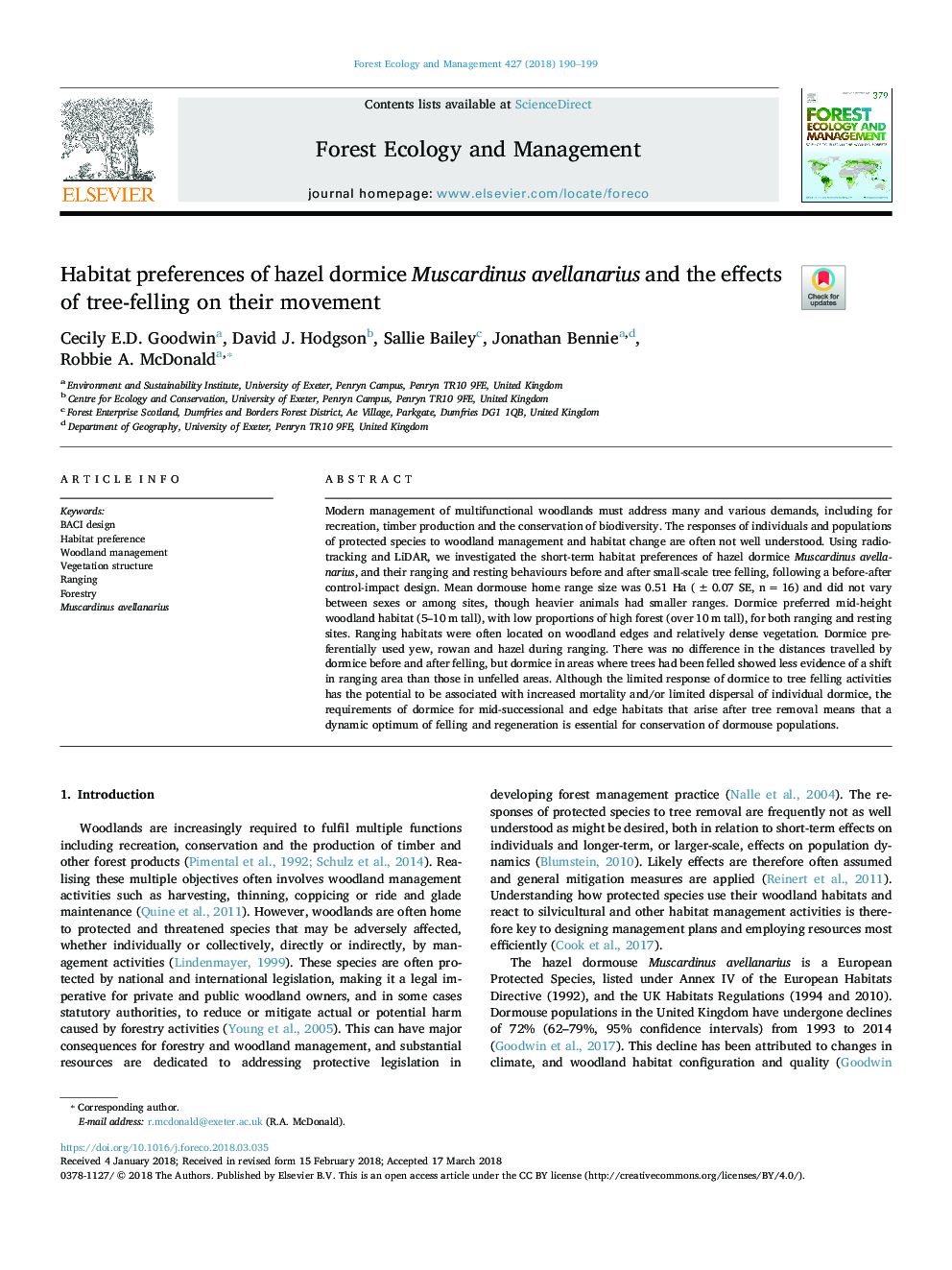| Article ID | Journal | Published Year | Pages | File Type |
|---|---|---|---|---|
| 6541509 | Forest Ecology and Management | 2018 | 10 Pages |
Abstract
Modern management of multifunctional woodlands must address many and various demands, including for recreation, timber production and the conservation of biodiversity. The responses of individuals and populations of protected species to woodland management and habitat change are often not well understood. Using radio-tracking and LiDAR, we investigated the short-term habitat preferences of hazel dormice Muscardinus avellanarius, and their ranging and resting behaviours before and after small-scale tree felling, following a before-after control-impact design. Mean dormouse home range size was 0.51 Ha (±0.07 SE, nâ¯=â¯16) and did not vary between sexes or among sites, though heavier animals had smaller ranges. Dormice preferred mid-height woodland habitat (5-10â¯m tall), with low proportions of high forest (over 10â¯m tall), for both ranging and resting sites. Ranging habitats were often located on woodland edges and relatively dense vegetation. Dormice preferentially used yew, rowan and hazel during ranging. There was no difference in the distances travelled by dormice before and after felling, but dormice in areas where trees had been felled showed less evidence of a shift in ranging area than those in unfelled areas. Although the limited response of dormice to tree felling activities has the potential to be associated with increased mortality and/or limited dispersal of individual dormice, the requirements of dormice for mid-successional and edge habitats that arise after tree removal means that a dynamic optimum of felling and regeneration is essential for conservation of dormouse populations.
Keywords
Related Topics
Life Sciences
Agricultural and Biological Sciences
Ecology, Evolution, Behavior and Systematics
Authors
Cecily E.D. Goodwin, David J. Hodgson, Sallie Bailey, Jonathan Bennie, Robbie A. McDonald,
